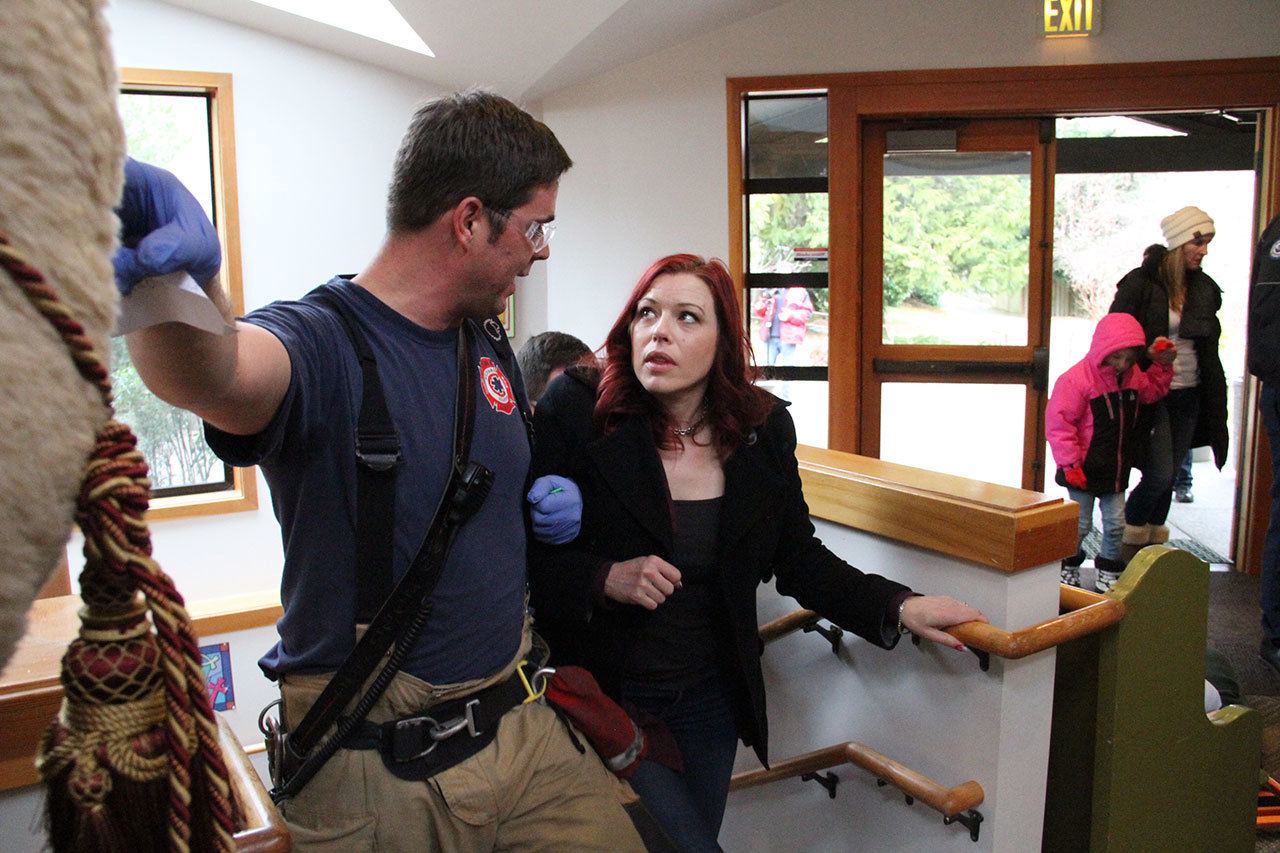Sean Liberman met the group of stretcher-carrying medics and their police escort at a side entrance to Rolling Bay Presbyterian Church.
It was a silent and gruesome greeting. Liberman was “dead,” sprawled out in front of the double-glass doors, with a bullet hole in his forehead.
The grisly scene stretched out left and right, down a hallway where scattered groups of the wounded victims of a mass shooter sat in shock, down stairwells and through classrooms, offices and restrooms on the church’s basement floor.
Scattered screams and cries for help echoed from one room to the next as EMTs and firefighters moved quickly from one victim to the next, assessing injuries and carrying the wounded to a triage area at the front of the church. “Help, help! He shot me!” one woman yelled.
“Don’t leave me!” screamed another.
A medic stopped to assist another victim nearby: “Where are you hurt?”
“I’m freaking out!” came the reply.
There were 23 victims in all; with gunshot wounds to their legs, arms and bellies.
But thankfully, this “tragedy” was training, and the gun wounds weren’t even skin deep, but makeup and plastic special effects dabbed on by volunteers a few hours earlier.
Assistant Chief Luke Carpenter of the Bainbridge Island Fire Department said the criminal mass casualty training exercise gave local responders the chance to prepare in unfamiliar surroundings for an event that is becoming all too common across the country.
Indeed, on the day before Saturday’s exercise, a mass shooting at Fort Lauderdale-Hollywood International Airport left five people dead.
“As we’ve seen, sadly, the day before the drill, these types of events can occur anywhere,” Carpenter said.
The fire department joins with Bainbridge police and other emergency responders to conduct such drills once a year; the previous one was in August at Bainbridge High.
Rolling Bay Presbyterian Church was a great location for the drill, Carpenter said, because of its complex layout and multiple entryways and exits. Bainbridge police were put in the position of guarding the emergency responders in the “warm zone” of the church grounds while searching for the shooter in the “hot zone” of the property.
The locations, and the scenarios, change each time.
Beyond shootings, Carpenter said the department has had personnel respond to simulated earthquakes, collapsed buildings, bus crashes and downed airplanes.
“We strive to create different scenarios whenever we do them, just to test people’s abilities,” Carpenter explained.
Things don’t always play out perfectly for the emergency responders, and that’s OK, Carpenter said.
Making mistakes during the training creates opportunities for lessons learned, and helps responders be more prepared for the real thing.
On Saturday, for example, there were breakdowns in communication that provided such learning opportunities.
“We had way more patients than we had resources,” Carpenter added.
“If this had been an actual event, we would have had a lot more agencies there,” he said.
Approximately 60 people in all participated in the drill, and many of the victims gathered in the front lobby of the church at the close of the exercise for coffee, muffins and a chance to chat about their “injuries.” Each victim had a card that explained their injuries and how long they had to live from their wounds without treatment.
“I was dead within 15 minutes if they didn’t chest seal, and dead within an hour if they didn’t transport,” one said.
Justin Germano, 16, a junior at Bainbridge High, had a simulated gunshot wound to the left leg. He was surprised that he was found and treated so fast after the drill began.
“It’s pretty cool,” he said. “It’s definitely really quick. They really had a system down.”



